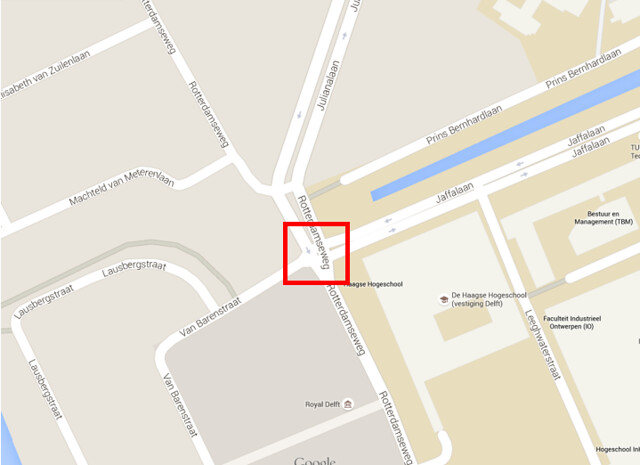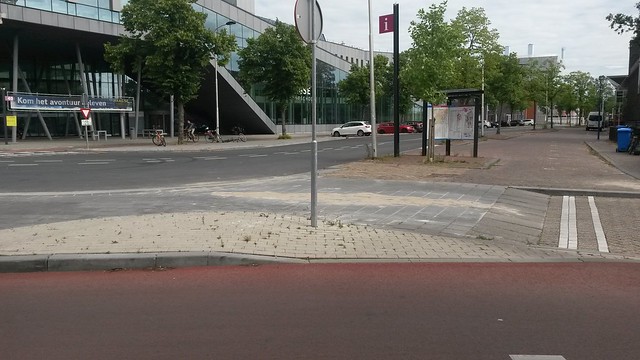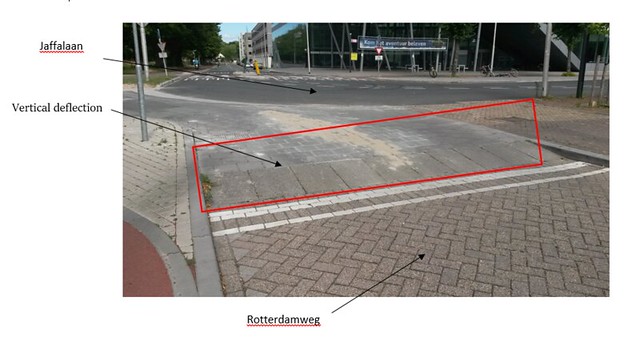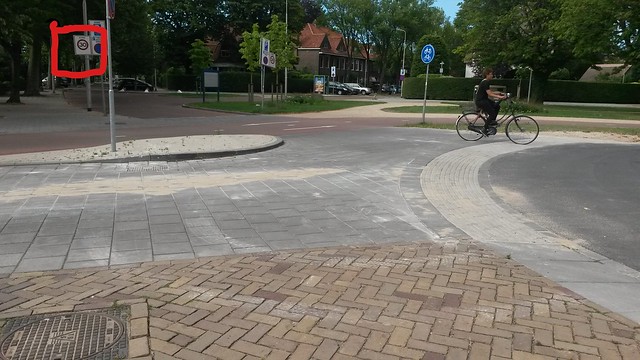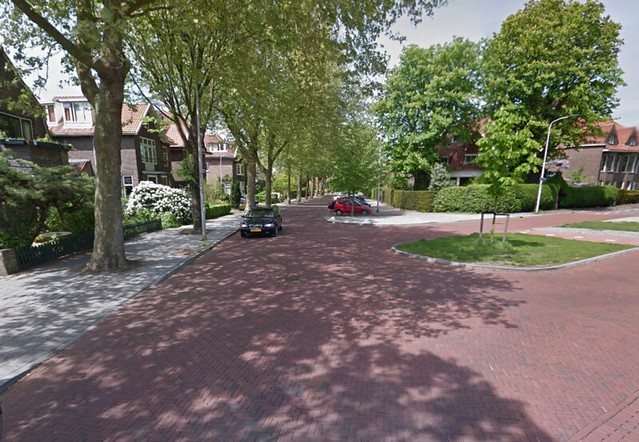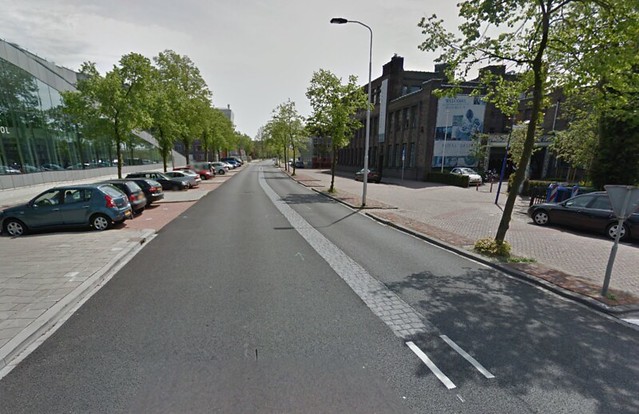Mild Vertical Deflection at Pedestrian Crossing – Kim Perrone
This is an example of a mild vertical deflection at an unsignalized pedestrian crossing at the intersection of Rotterdamweg and Jaffalaan.
This raised crossing demonstrates several principles of sustainable safety. It is functional in its primary purpose to force cars to slow down, in a way similar to that of a speed hump. The deflection is significant enough that a driver would notice the feature and they would receive a jolt if they were traveling too fast. It also serves the same purpose as a crosswalk would; it makes it clear to pedestrians that this location is intended for safe crossings.
It achieves homogeneity by slowing down cars at a point where there is a potential conflict with pedestrians. The goal is for all road users to have equal speed and direction because a collision will be less severe under these conditions. Therefore, it is necessary for cars to slow down to the speed of a pedestrian since a person’s chances of surviving an accident increase dramatically. It is especially important here because the intersection is unsignalized, increasing the likeliness that a car would drive through without looking for pedestrians.
While the 30 km/hr sign is helpful, the traffic calming device is more effective in enforcing the speed limit. Since this is a quiet, local street it is possible to achieve some level of homogeneity. If it is not realistic to do so, different types of road users should be physically separated.
It also displays recognition. Drivers will see that the surface is elevated to the same level as the sidewalk and will hopefully realize that they are in a shared space with pedestrians; this will make them more aware of crossings. Recognition is also important here for determining what type of road it is. This section of Rotterdamweg is narrow, paved with brick, unlaned, and has low volumes of traffic. It branches out into several local streets such as Julianalaan and Prins Bernhardlaan. This is a residential area where low speeds are required, as told by the posted 30 km/hr limit.
Looking north down Rotterdamweg from the intersection
In contrast, Jaffalaan has two distinct lanes and is paved with asphalt. This is a major thoroughfare through the university and experiences moderate amounts of traffic. These elements prove that each road has a different function. The vertical deflection helps maintain a distinction and alert drivers to the transition in road type.
Looking east down Jaffalaan from the intersection
Clearly, this deflection is a prime example of sustainable safety. It encourages safe crossings, cautious drivers, and low speeds at an unsignalized intersection.
